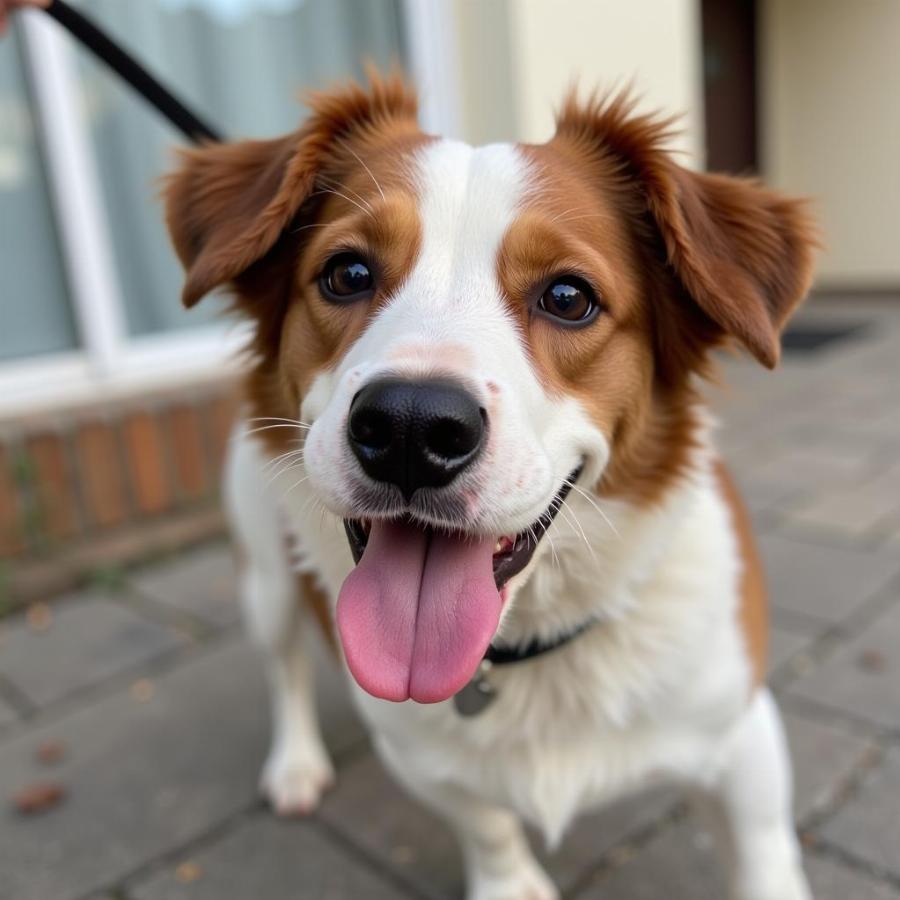Knowing when and how to walk your dog after eating is crucial for their health and well-being. While a post-meal stroll might seem harmless, it can actually lead to serious health issues if not done correctly. This comprehensive guide will walk you through everything you need to know about walking your dog after eating, ensuring they get the exercise they need while staying safe and healthy.
Why Timing Walks After Meals Matters
Dogs, like humans, need time to digest their food. When a dog eats, blood flow is directed towards the digestive system to aid in this process. If a dog engages in strenuous activity right after eating, this process is disrupted. Instead of blood flowing to the stomach and intestines, it gets diverted to the muscles, potentially leading to digestive upset, vomiting, or even a life-threatening condition called bloat.
How Long to Wait After Your Dog Eats
The general rule of thumb is to wait at least 30 minutes after a small meal and an hour after a large meal before taking your dog for a walk. However, this is just a guideline. The ideal waiting time can vary depending on several factors:
- Breed: Large and giant breeds, especially deep-chested dogs like Great Danes and German Shepherds, are more prone to bloat and require a longer waiting period.
- Age: Puppies and senior dogs have more sensitive digestive systems and benefit from shorter, gentler walks after meals.
- Type of food: Food high in fat and protein takes longer to digest. If your dog enjoys a particularly rich meal, it’s best to extend the waiting time.
Signs Your Dog is Ready for a Walk
Observing your dog’s behavior can provide valuable clues about their readiness for a walk:
- Restlessness: If your dog seems restless and eager to go outside, it’s a good sign that they’ve had enough time to digest.
- Elimination: Most dogs need to relieve themselves after eating. If your dog has already gone potty, it usually indicates they’re ready for a walk.
- Energy levels: Has your dog’s energy level returned to normal after their post-meal nap? If so, it’s a good indication their body is ready for some activity.
 Dog Restless After Eating
Dog Restless After Eating
Walking Your Dog Too Soon After Eating: Potential Risks
Ignoring your dog’s need for sufficient digestion time can lead to various health problems:
- Vomiting: Walking too soon after eating can cause your dog to regurgitate their food.
- Bloat: This serious condition, also known as Gastric Dilatation-Volvulus (GDV), occurs when a dog’s stomach fills with gas and twists, cutting off blood flow. It’s a life-threatening emergency that requires immediate veterinary attention.
- Digestive upset: Walking can disrupt the digestive process, leading to discomfort, diarrhea, or constipation.
Tips for Safe and Enjoyable Walks
- Start slow: Begin with a leisurely pace, gradually increasing the intensity as your dog gets warmed up.
- Keep it short: Opt for shorter walks after meals, especially if your dog has eaten a large amount or is prone to digestive issues.
- Choose the right activity: Instead of a strenuous run, consider a gentle stroll in the park or a relaxing game of fetch in the backyard.
- Hydration is key: Always carry water for your dog, especially during warmer months.
- Be mindful of your dog: Pay attention to your dog’s body language. If they seem tired or reluctant to continue, it’s time to head home.
Expert Insights
“As a veterinarian, I can’t stress enough the importance of waiting an appropriate amount of time after meals before walking your dog,” says Dr. Emily Parker, DVM. “Not only does it aid in digestion, but it also reduces the risk of potentially life-threatening conditions like bloat. Always err on the side of caution and consult with your veterinarian if you have any concerns.”
Conclusion
Walking your dog after eating doesn’t have to be a risky endeavor. By understanding your dog’s needs and following these guidelines, you can ensure that your furry friend enjoys safe and healthy walks, promoting both their physical and digestive well-being. Remember, a well-exercised and properly nourished dog is a happy and healthy dog!
FAQ
Q: Can I feed my dog immediately after a walk?
A: It’s best to wait at least 30 minutes after a walk to feed your dog, allowing them time to catch their breath and relax before eating.
Q: My dog throws up after every walk. Should I be concerned?
A: If your dog consistently vomits after walks, it’s essential to consult your veterinarian to rule out any underlying medical conditions.
Q: What are the symptoms of bloat in dogs?
A: Symptoms of bloat include a distended abdomen, excessive drooling, restlessness, unsuccessful attempts to vomit, and signs of pain. Bloat is a medical emergency requiring immediate veterinary care.
Need More Help?
For more information on dog health and care, check out these helpful resources:
About Beaut Dogs
Beaut Dogs is your one-stop resource for all things dog-related, offering expert advice, helpful tips, and insightful articles to help you provide the best possible care for your furry companion. When you need trusted guidance on your dog ownership journey, our team of passionate dog lovers and experts is here to support you.
For personalized advice and answers to your specific questions, reach out to our team at [email protected]. We’re always happy to help!